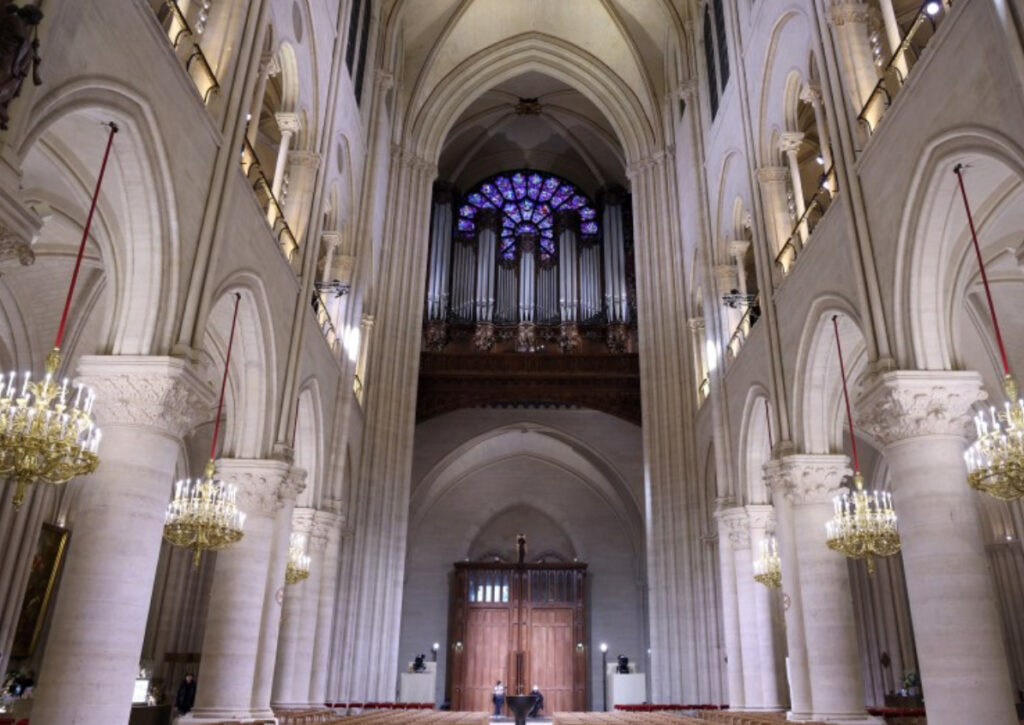The Notre Dame Cathedral in Paris, an iconic masterpiece of French Gothic architecture, has been a global symbol of history, faith, and cultural heritage for centuries. Its reconstruction, following the devastating fire of 2019, is a pivotal moment not only for France but for the world. The restoration project has reignited conversations about the cathedral’s origins, its historical significance, the events leading to its partial deconstruction, and the types of global tourism it continues to attract.
The Origin of Notre Dame: A Beacon of Faith and Innovation
Notre Dame de Paris, or “Our Lady of Paris,” was commissioned in 1160 by Bishop Maurice de Sully and constructed between 1163 and 1345. The cathedral was erected as a demonstration of the city’s devotion to the Virgin Mary and its prominence as the religious and cultural heart of medieval Paris. Its purpose extended beyond religious worship, symbolizing the unity of France under the Catholic Church and showcasing advancements in Gothic architecture.
Key Features of Notre Dame’s Design:
•Gothic Innovations: Notre Dame was among the first structures to incorporate flying buttresses, allowing for taller walls and larger stained-glass windows, which filled the interior with divine light.
•Sculptural Mastery: The façade features intricate sculptures, including the famous gargoyles and figures of saints, representing biblical narratives and moral lessons.
•Rose Windows: The three iconic rose windows symbolize divine perfection and are celebrated as masterpieces of stained glass artistry.
Notre Dame’s construction unified artists, architects, and laborers, making it not only a spiritual symbol but also a cultural and technological achievement of its time.
How Notre Dame Became Deconstructed: The Fire of 2019
On April 15, 2019, the world watched in horror as a massive fire engulfed Notre Dame. The blaze began in the attic, likely caused by an electrical short circuit or a mishap during restoration work. Despite the efforts of 500 firefighters, the fire destroyed the spire, much of the wooden roof, and parts of the upper walls.
Key Elements Damaged by the Fire:
•The Spire: Added in the 19th century by architect Eugène Viollet-le-Duc, the 93-meter spire collapsed dramatically, symbolizing the magnitude of the disaster.
•The Roof: Known as “the Forest” due to its ancient oak beams, the roof was almost entirely consumed by flames.
•Structural Integrity: While the stone vaults survived, they suffered significant stress, and water damage from firefighting efforts further weakened the structure.
The fire not only threatened the physical building but also the priceless artifacts housed within, including relics like the Crown of Thorns, which was miraculously saved by brave responders.
The Reconstruction Effort: A Global Undertaking
The reconstruction of Notre Dame is one of the most ambitious restoration projects in history, with an estimated completion date of 2024. French President Emmanuel Macron pledged to restore the cathedral to its former glory within five years, a goal driven by national pride and international support.
Key Aspects of the Reconstruction:
•Authentic Restoration: The restoration team has committed to preserving the cathedral’s original design, using materials and techniques that align with its medieval construction. For example, oak beams from French forests are being sourced to rebuild the roof.
•Modern Technology: Advanced technologies such as 3D laser scans and digital modeling are being used to ensure precision in the restoration process.
Donations and expertise have poured in from around the world, with countries, organizations, and individuals contributing to the effort. The Vatican, UNESCO, and private donors have been key supporters.
The reconstruction also reflects a delicate balance between maintaining historical authenticity and incorporating modern safety measures to prevent future disasters.
Global Tourist Attraction:
Notre Dame has long been one of the most visited tourist attractions in the world, drawing approximately 13 million visitors annually before the fire. The cathedral appeals to diverse audiences for various reasons:
Architectural Marvel:
Students, architects, and art enthusiasts flock to Notre Dame to study its pioneering Gothic design. Its flying buttresses, rose windows, and sculptures are seen as a pinnacle of medieval craftsmanship.
Pop Culture Icon:
The cathedral gained renewed fame through Victor Hugo’s The Hunchback of Notre-Dame, which immortalized it as a symbol of resilience and beauty. The Disney adaptation further cemented its place in popular culture.
Restoration Tourism:
Since the fire, Notre Dame has drawn “restoration tourists” interested in witnessing the reconstruction process. Visitors are fascinated by the innovative techniques and the symbolic significance of the rebuilding effort.
Emerging Trends in Cultural Tourism at Notre Dame
The reconstruction has spurred new trends in cultural and heritage tourism, emphasizing sustainability, education, and immersive experiences:
Educational Initiatives:
Guided tours and exhibitions now focus on the history of Notre Dame and the ongoing reconstruction, offering visitors a deeper understanding of the challenges and triumphs of preserving cultural heritage.
Virtual Access:
Advanced technologies such as virtual reality tours allow global audiences to explore Notre Dame remotely, democratizing access to its beauty and history.
Cultural Festivals:
Events and festivals celebrating Notre Dame’s history and reconstruction have become popular, turning the cathedral into a hub for cultural exchange.
Upon Reopening
The reconstruction of Notre Dame is more than a restoration of bricks and mortar—it’s a global effort to preserve a symbol of humanity’s creativity, faith, and resilience. From its origins as a medieval marvel to its role as a modern cultural landmark, Notre Dame continues to inspire generations.
As the world eagerly anticipates its reopening in 2024, Notre Dame’s story reminds us of the enduring power of cultural heritage and the collective will to protect it for future generations. Whether as a site of spiritual reflection, an architectural wonder, or a living history lesson, Notre Dame stands as a testament to the unyielding human spirit.
No comments yet.








